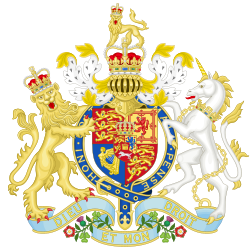| Act of Parliament | |
 | |
| Long title | An Act to confirm and give effect to Terms of Union agreed between Canada and Newfoundland |
|---|---|
| Citation | 12, 13 & 14 Geo. 6. c. 22 |
| Territorial extent | Dominion of Newfoundland, Dominion of Canada |
| Dates | |
| Royal assent | 23 March 1949 |
| Commencement | 31 March 1949 |
Status: Current legislation | |
| Text of statute as originally enacted | |
| Revised text of statute as amended | |
The Newfoundland Act was an act of the Parliament of the United Kingdom that confirmed and gave effect to the Terms of Union agreed to between the then-separate Dominions of Canada and Newfoundland on 23 March 1949. It was originally titled the British North America Act 1949, but was renamed in Canada on the patriation of the Canadian Constitution from the United Kingdom in 1982.
Contents
In exchange for Newfoundland becoming a province, the Canadian government took over the Newfoundland Railway, Newfoundland Airport (now Gander International Airport), public broadcasting, telegraph services and other services that fell under federal control. The federal government assumed responsibility for Newfoundland's debt. [1]
Newfoundland was also given statutory subsidies, a special subsidy of $1.1 million, the right to enter into tax rental agreements with the federal government and an additional transitional grant of $3.5 million, diminishing by 10 per cent per year for a total of 12 years. Also, as a safety net, it was agreed a royal commission would review finances. [1]


